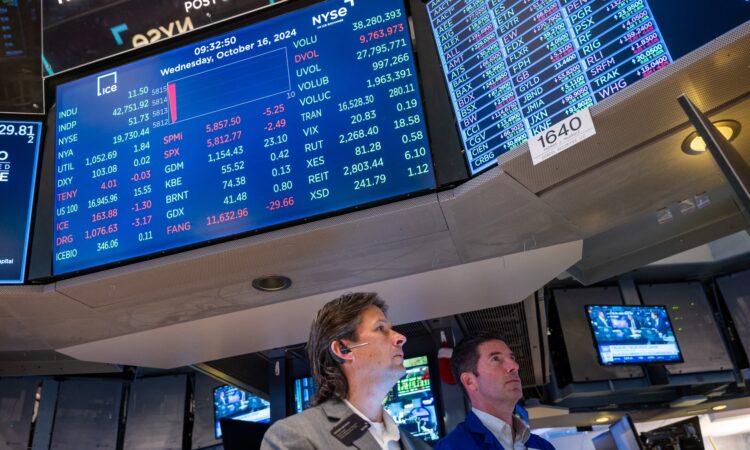Want to know who will win the US election? Take a look at the stock market | US Election 2024

Want to know who will win the United States presidential election? Take a look at the stock market.
Of course, there is no crystal ball to tell us who will prevail on November 5.
The polls, as much as they can be trusted, show Vice President Kamala Harris and former President Donald Trump running neck and neck in what many observers believe could be the closest election in decades.
Even so, the performance of US stocks has an uncanny track record of predicting the outcome of presidential elections.
Since 1928, the S&P 500 – which tracks the performance of 500 of the largest firms listed in the US – has pointed to the winner in 20 out of 24 elections, according to an analysis by financial services company LPL Financial.
When US stocks were up during the three months before election day, the incumbent party kept the White House on 12 out of 15 occasions. And the party in power lost eight out of the last nine times that the market was in negative territory leading up to the vote.
It is not a bad track record as forecasting models go.
With less than two weeks until the election, the S&P 500 is up a healthy 11.8 percent since early August.
Assuming US stocks do not take a dramatic tumble in the final days of the campaign, the historical trend clearly favours Harris.
However, caveats abound.
Unfortunately for Harris, voters do not appear to associate the stock market’s strong performance with the economy doing well.
While an estimated 61 percent of Americans own shares, a large segment of voters has no exposure to the market.
In an Associated Press-NORC Center for Public Affairs Research poll released this week, 62 percent of registered voters, including overwhelming majorities of Republicans and independents, rated the state of the economy as “bad”.
On the plus side for Harris, voters expressed growing confidence in the Democrat’s ability to handle economic issues, suggesting that Trump’s once-clear advantage on the economy has all but disappeared.
The prevailing gloom is despite the fact that, by most metrics, including gross domestic product (GDP) growth and the unemployment rate, the US economy is performing at a level that would be the envy of most developed countries.
One of the most plausible and frequently offered reasons for the negative sentiment is that consumers are weary of higher prices – even though inflation, which last month fell to 2.4. percent, is now close to the Federal Reserve’s target after surging during the COVID-19 pandemic.
While wages have been growing faster than inflation for well over a year, they have still not grown enough to fully offset the rise in the cost of living since the pandemic.
Whereas prices rose about 20 percent between January 2021 and June of this year, wages only increased 17.4 percent, according to an analysis by Bankrate using Department of Labor statistics.
Although wage growth has continued to beat inflation since then – coming in at 4.2 percent versus 2.6 percent during July-September – Bankrate predicts that the post-pandemic gap will not fully close until the second quarter of 2025.
No matter how many positive economic statistics are rolled out to tout the current administration’s record, consumers are reminded that prices for everyday items cost considerably more than they used to every time they are at the supermarket checkout.
Another good reason to be cautious about reading too much into the stock market’s predictive powers is that we appear to be living in an era of politics that does not follow any rulebook.
Much as his 2016 victory smashed numerous precedents, Trump’s very place on the Republican ticket, in spite of four criminal indictments, numerous scandals and years of negative media coverage, is a challenge to conventional wisdom.
Indeed, the last time the S&P 500 failed to predict the next occupant of the White House was the most recent election.
After presiding over a 2.3 percent market gain, Trump lost to President Joe Biden.
